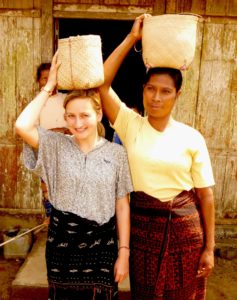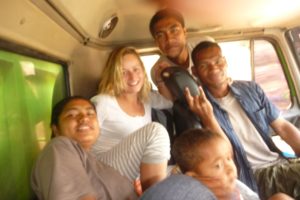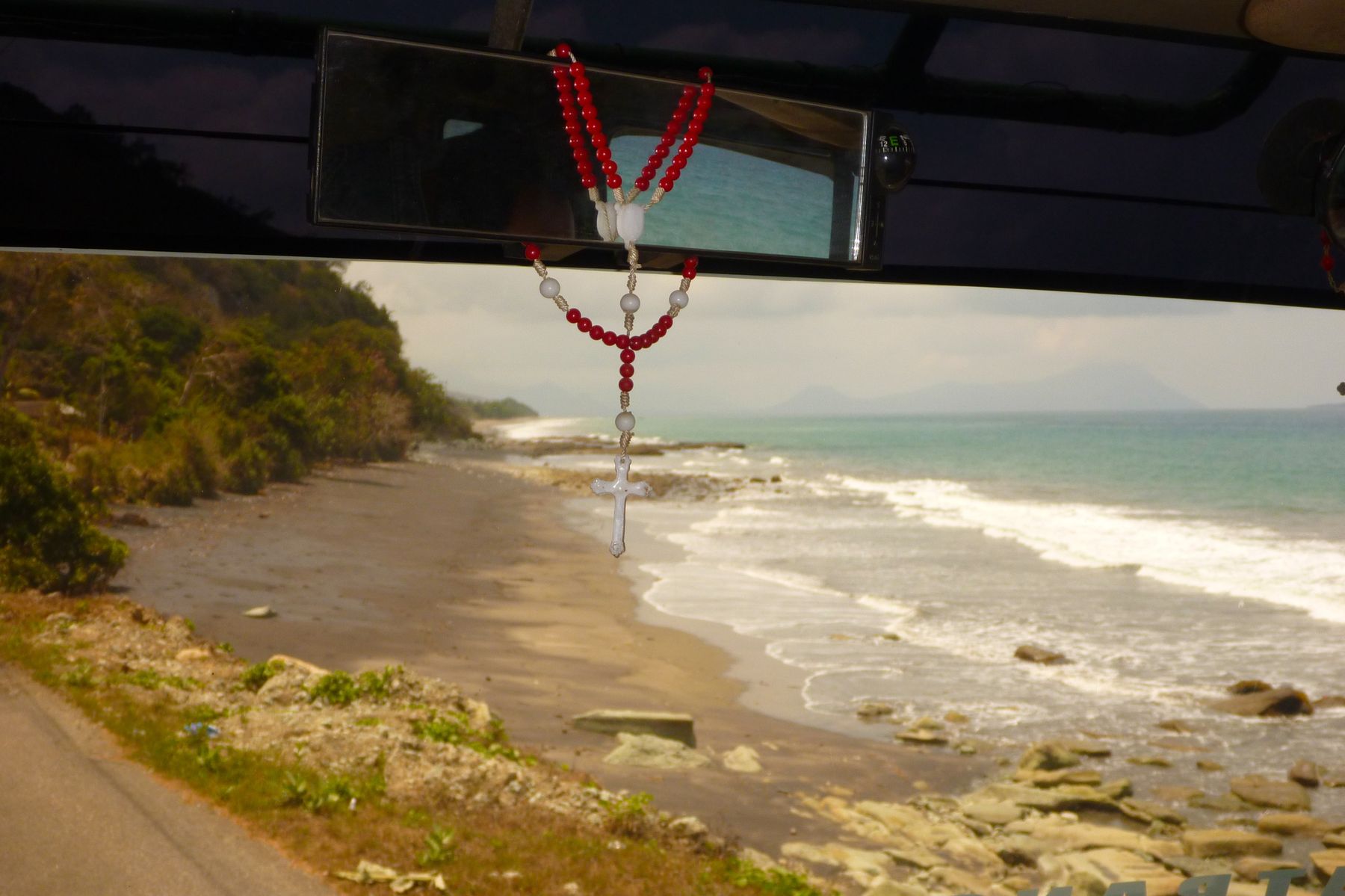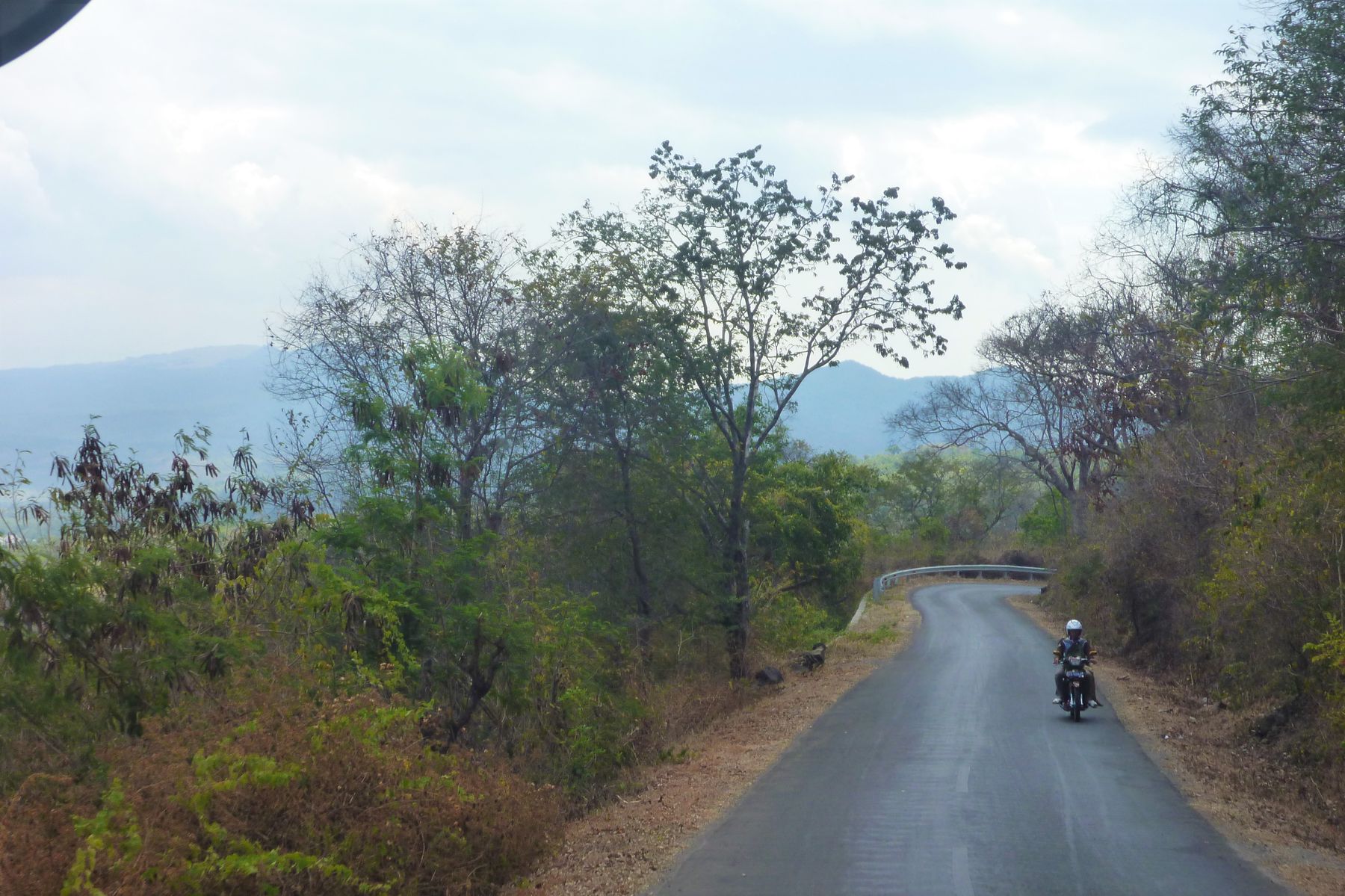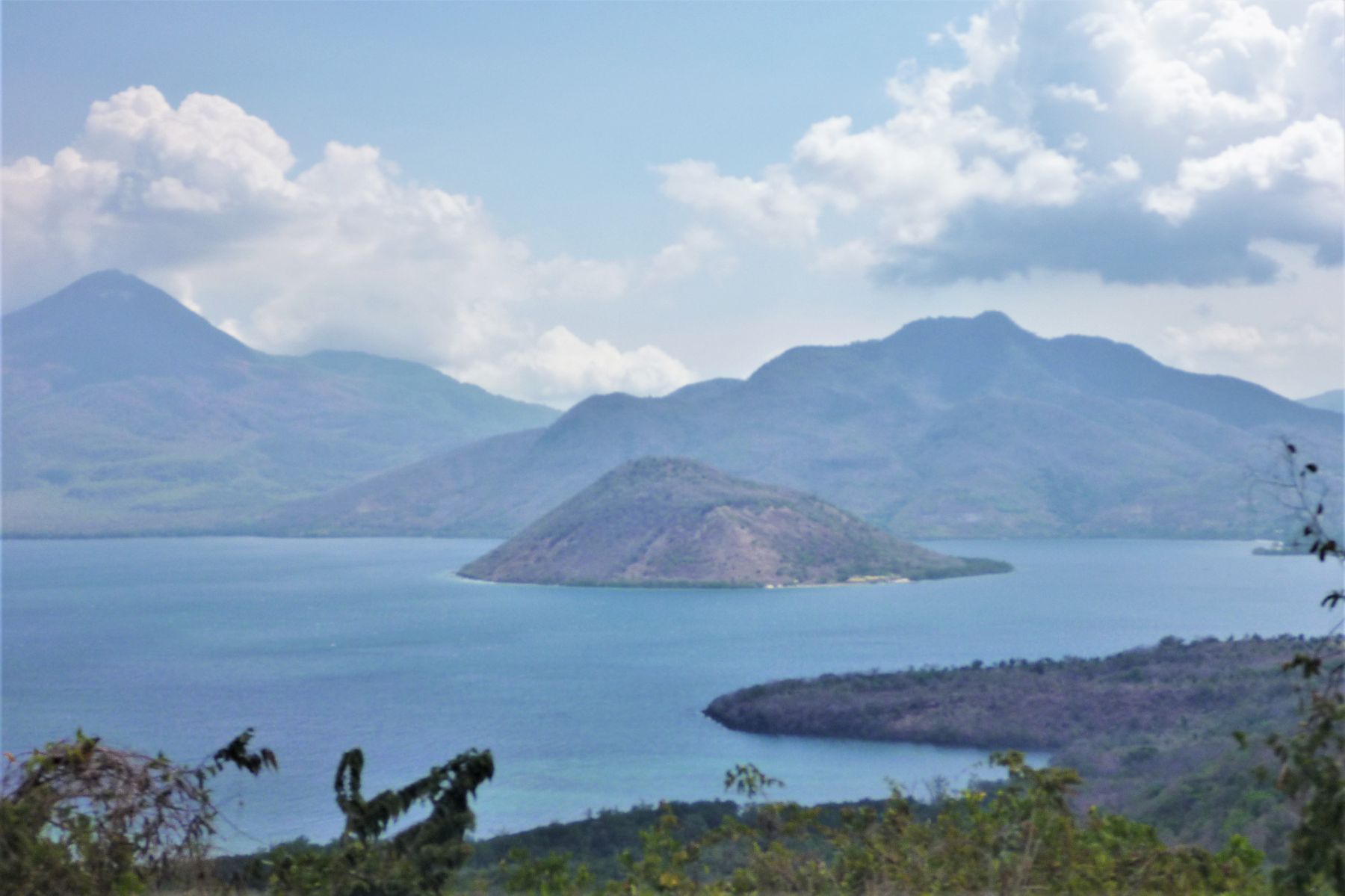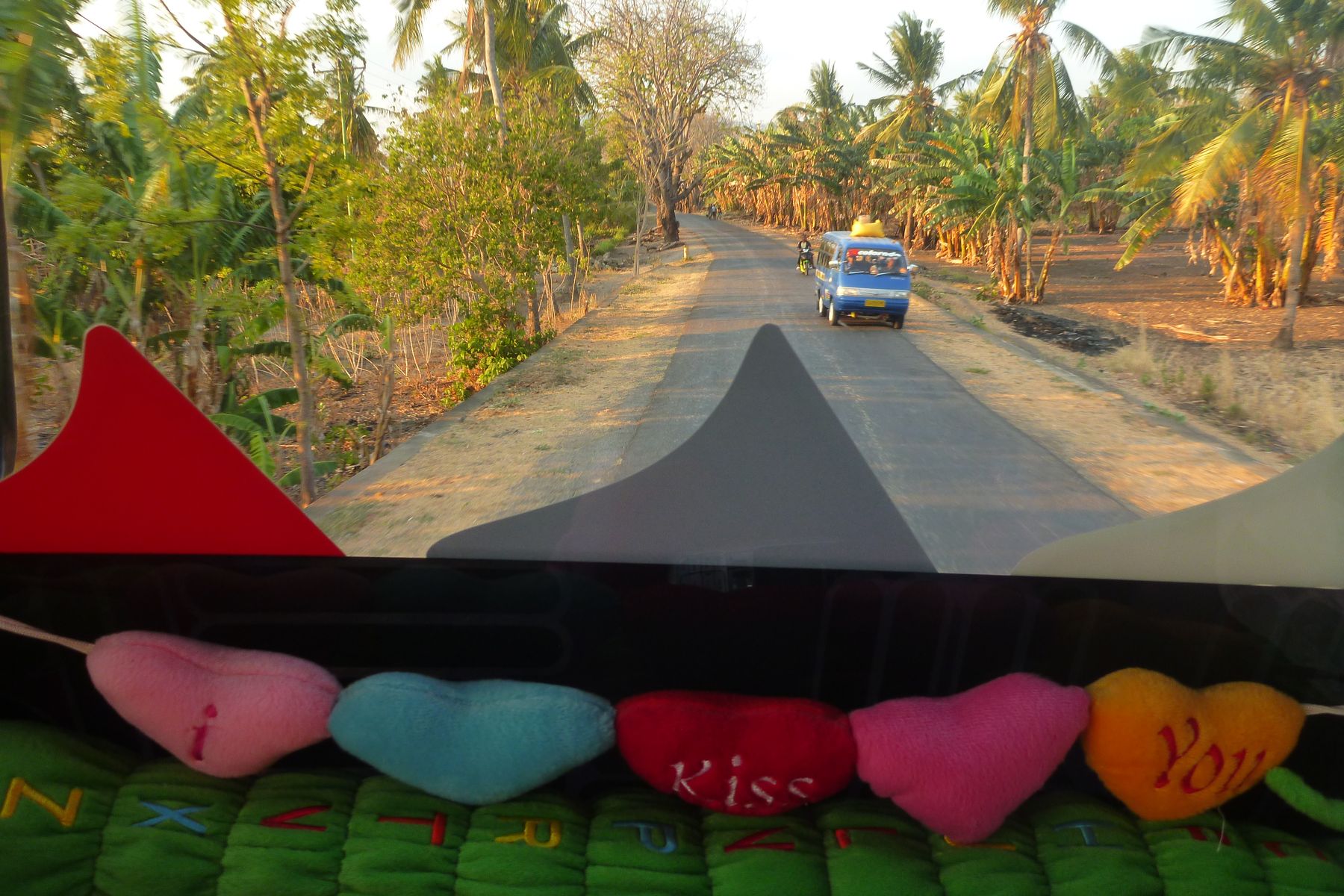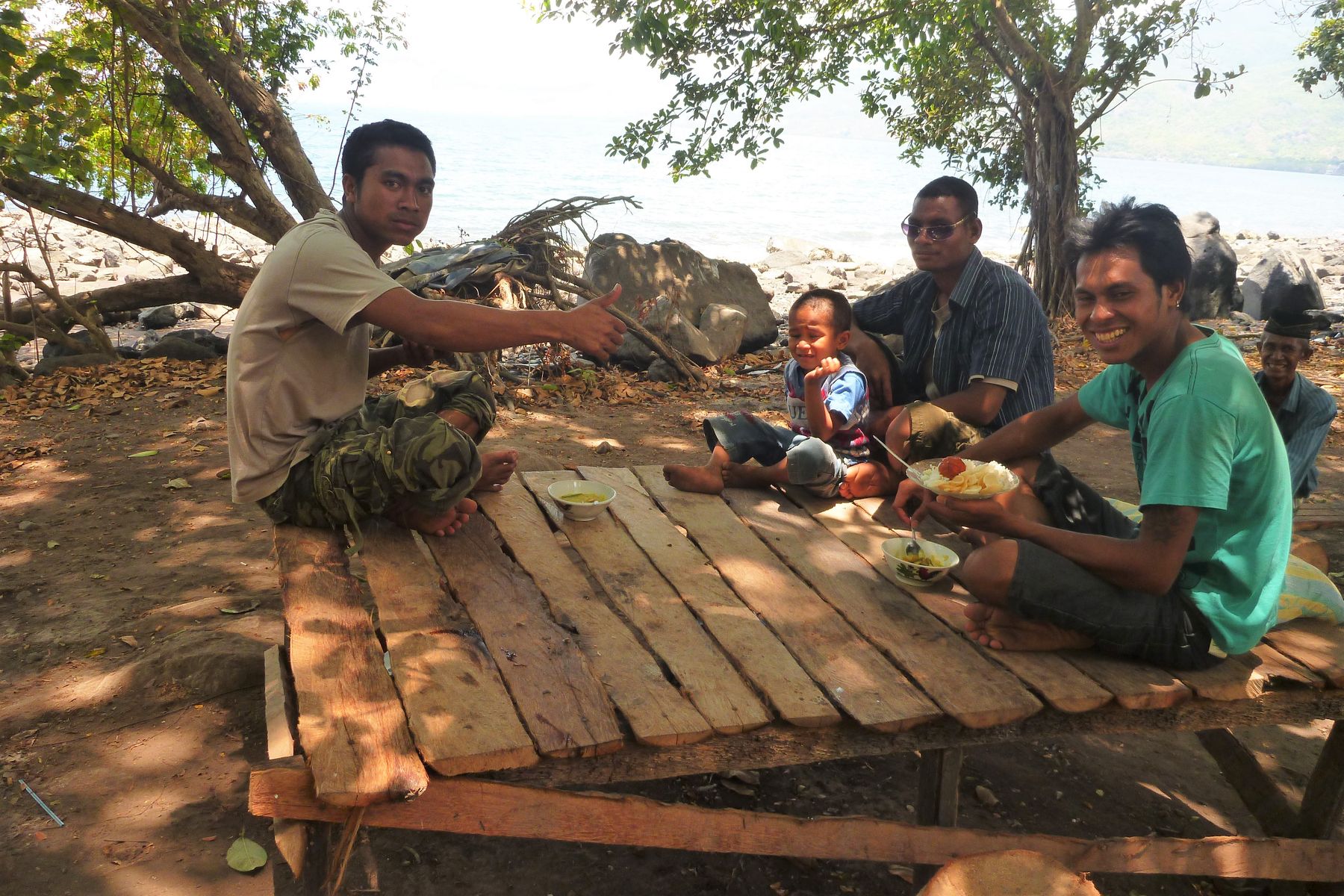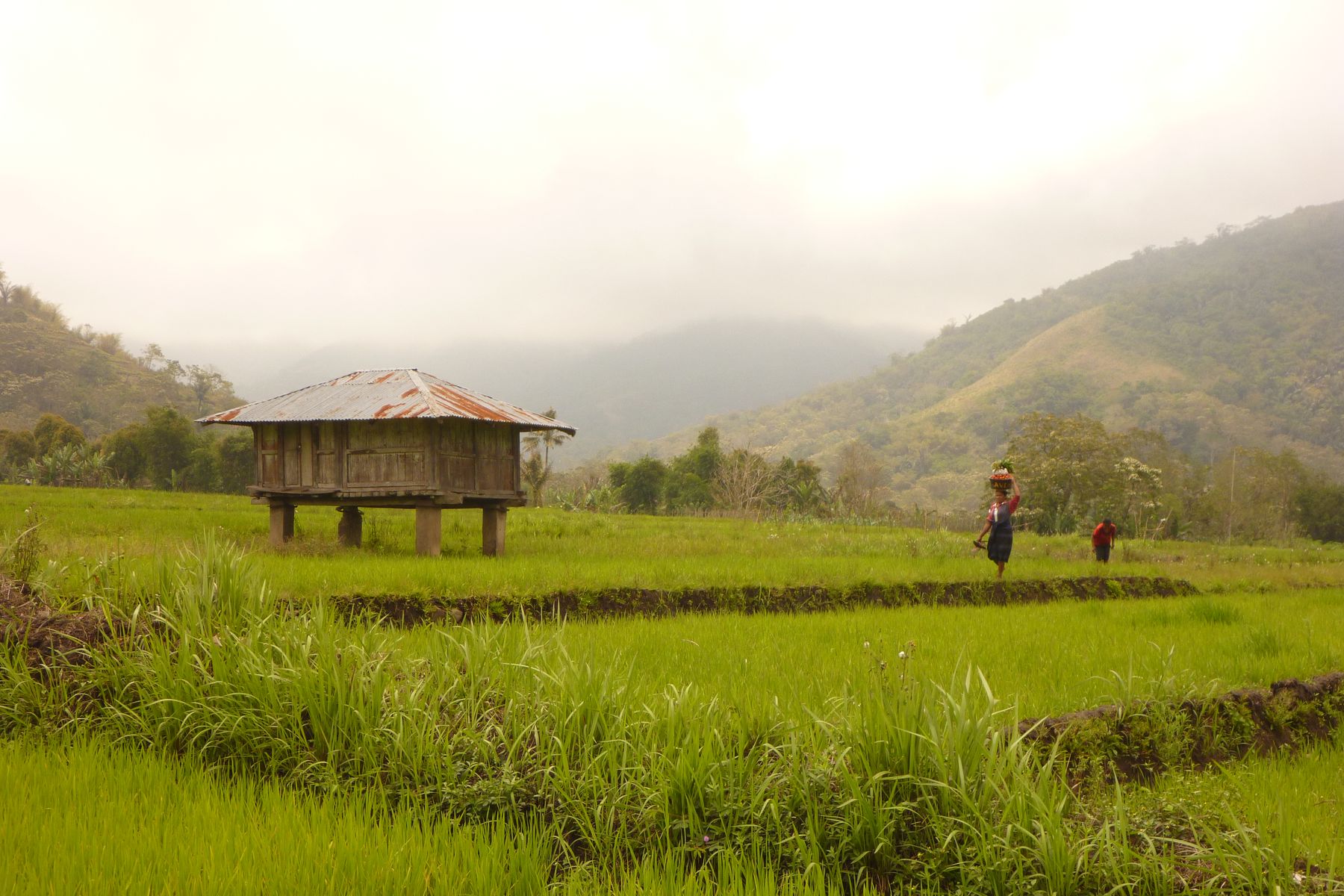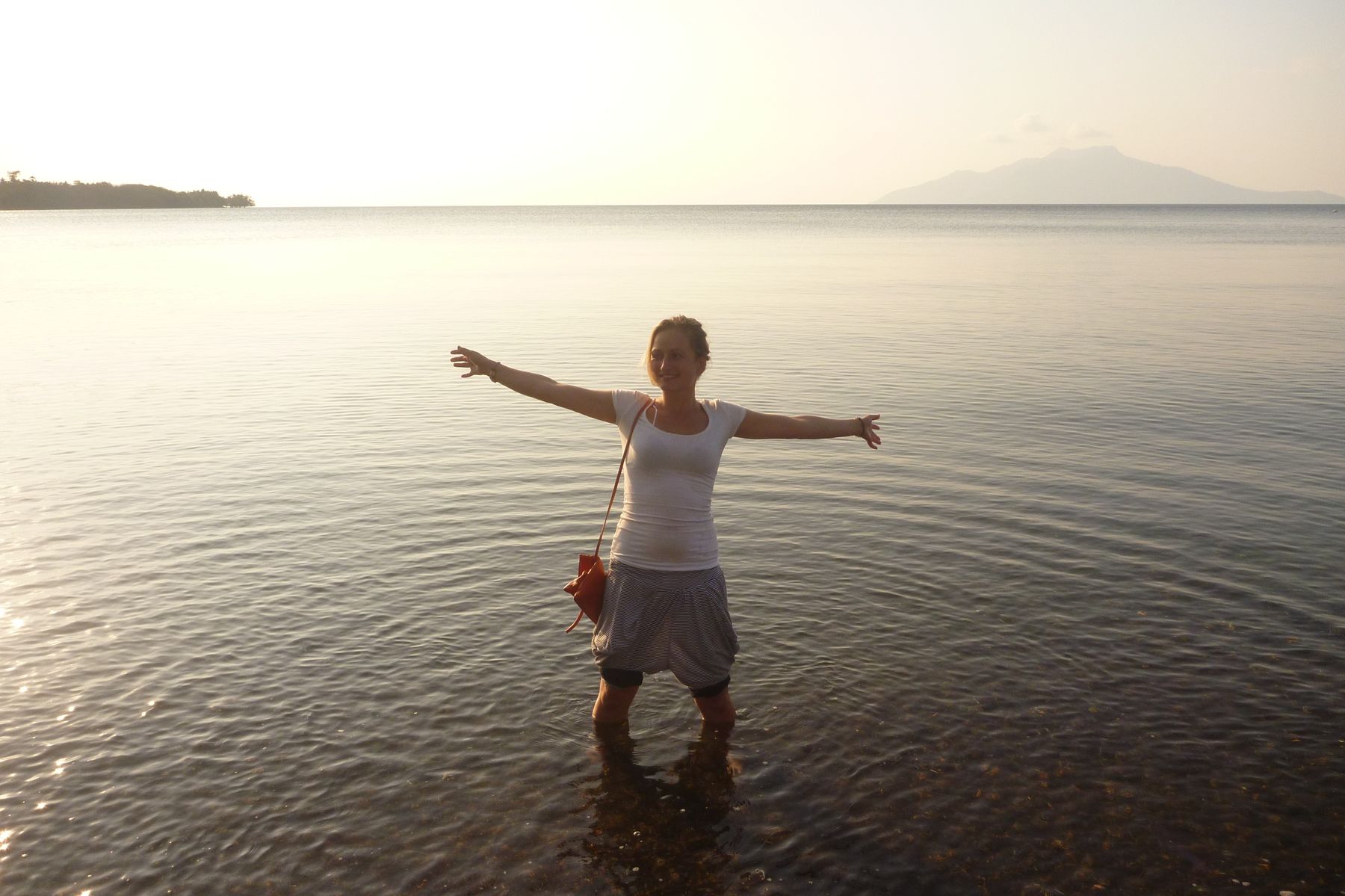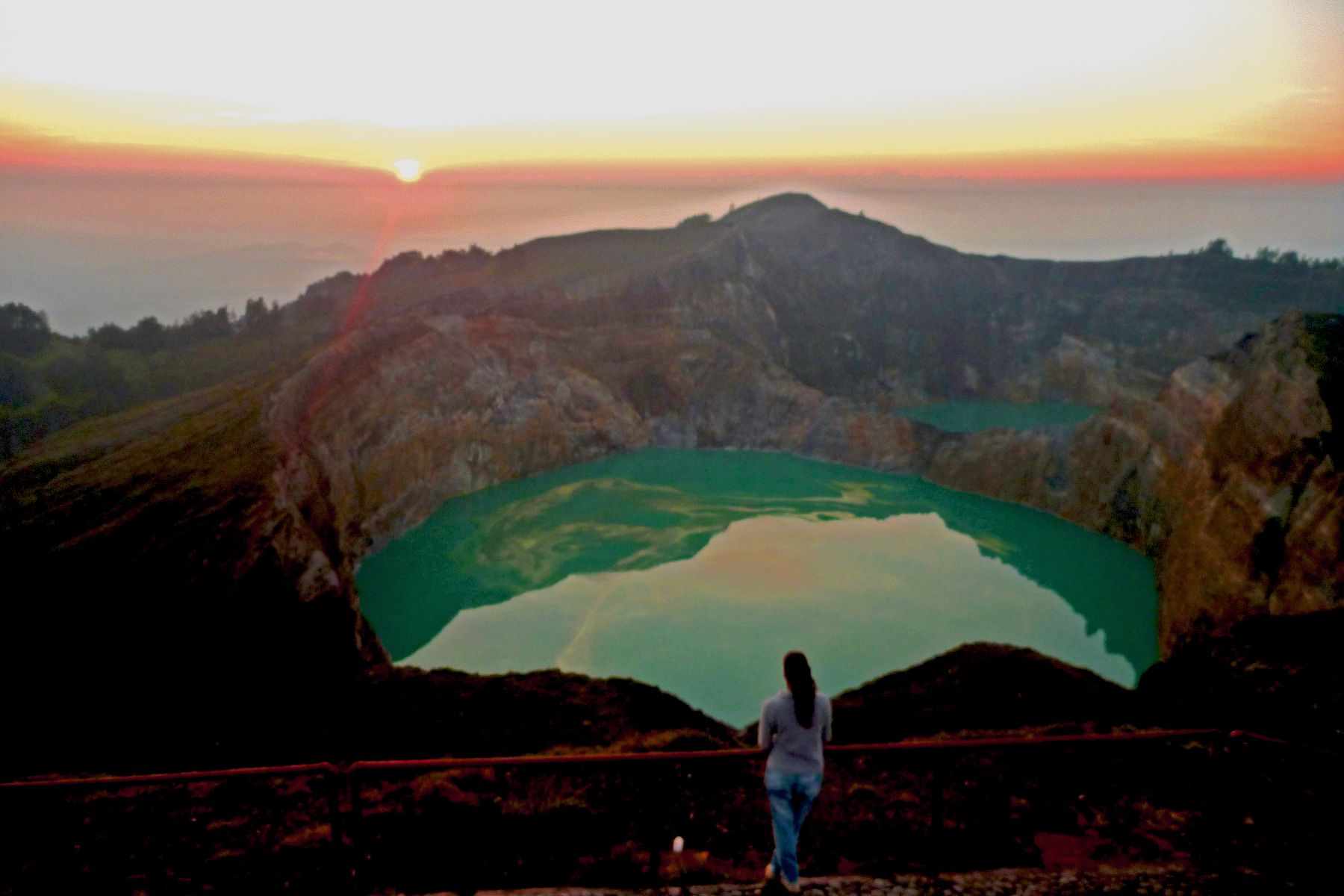Eastern Indonesia, 2011
I have about 115 word-doc pages of my book written now and I’m up to the year 2011, which means I only have about five more years to write about! That might take me a while though, since those five years were kinda crazy :D
I’ll share one of my favorite adventures with you now. This one starts off after I quit university for the fourth time and traveled through Indonesia from Bali to Komodo National Park by myself at age 22-
*this font is what I wrote back in 2011
The default print is my narration of the story. Italics are my thoughts at the time. Hope it makes sense!

[… Chapter 13]
I decided to keep on going east, where there were no tourists. I wanted to catch a bus to Bajawa, which was the closest city to a number of interesting looking native villages. There weren’t many busses around, however, and I ended up catching a ride with a tour guide for the same price as a bus. It was that cheap only because the guide was going there anyway.
The drive from Labuan Bajo to Bajawa was incredible, it went through big lush green mountain passes, weaved around the side of the ocean and up and down colorful hills. It’s no coincidence that the Portuguese colonizers called this island “Flores.” The jungle was covered in flowers!
We stopped at the guide’s mother’s house, in a small village in the mountains on the way to Bajawa. She gave us some snacks and a fresh cup of coffee, then the guide explained some things to me,
“When I was kid, there was no road here. If you want go to Labuan Bajo, you walk for four days on this path. Now the path is road.
Things change too quickly here in Indonesia. Look at my mother, I gave her a cellphone so I can call her, but she don’t understand. I call her and it rings but she don’t know how pick it up. I explain but she don’t get it.
Environment is changing so quickly, but the people’s minds can’t keep up.”
I thought about this. I suppose that’s why there’s so much garbage everywhere you look. 30 years ago, the only garbage these people had were banana peels and coconut shells. It wasn’t a problem to eat a banana and throw the peel anywhere you want, but the people’s minds didn’t change when Western companies replaced those bananas with snickers bars and the peels with plastic.
After another four or five hour drive, we made it to Bajawa.
There, again, I could not escape the constant attention. Every 20 feet I walked in a public area someone would yell ‘bule’ (white skinned tourist) at me. The thing that bothered me the most was that I felt like I could not relate to anybody. I was always on the other side, always the ‘bule,’ never another human being. It seemed like everybody just wanted something from me, that I could not talk to another human being on a straight and honest level, and that nobody could be trusted.
I was angered by this and did not want to give my money away to anybody. Because of this, rather than paying for a tour or even a motorbike ride to the traditional villages, I walked. I walked for 20km and reached the village of Bena- where they asked me for money to enter the village…
It was an interesting looking village. The houses had thatched roofs and there were graves in the front yard. There were also big stones and little thatched-roof shacks and umbrellas on their territory.
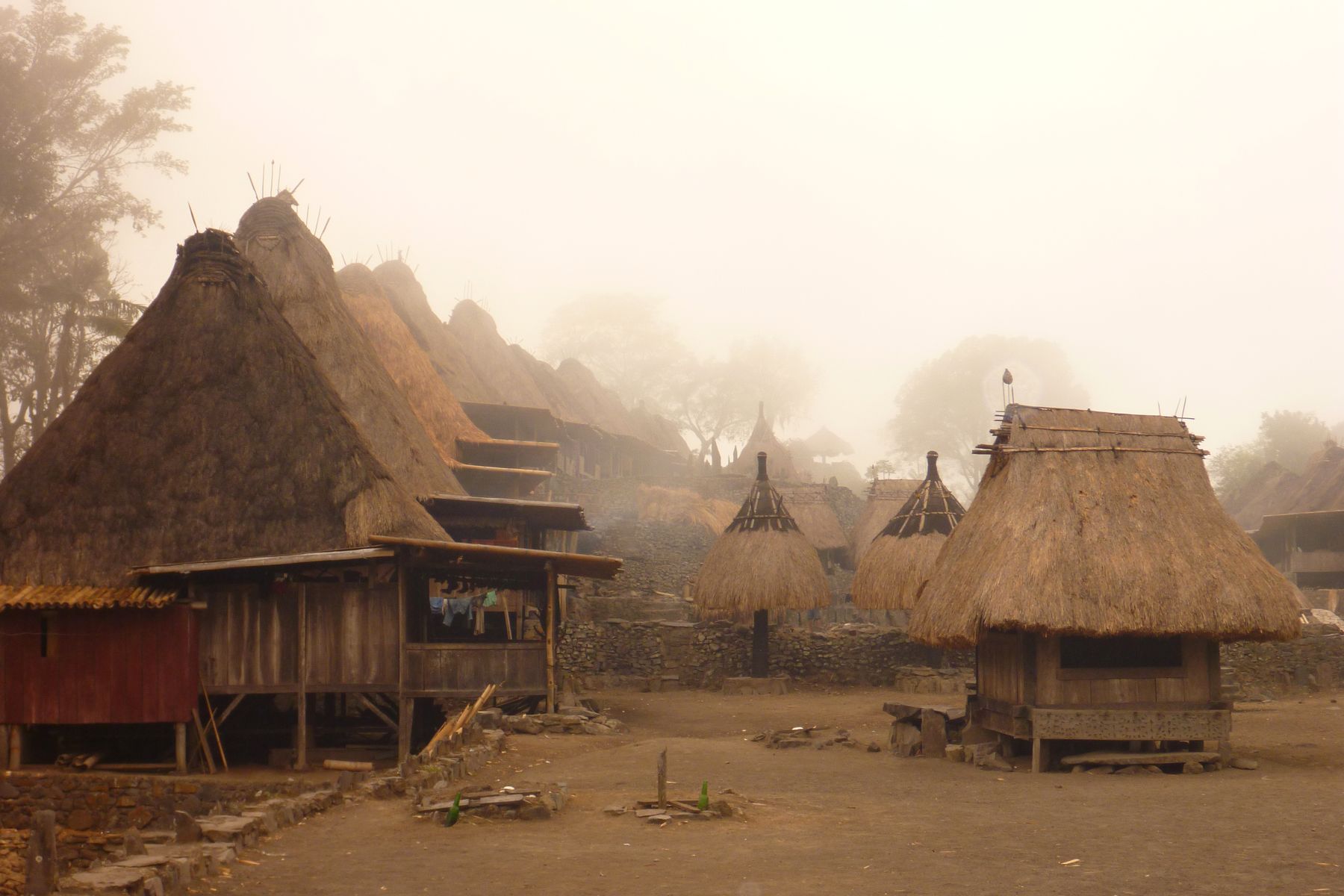
The next morning, I woke up feeling fed up. I decided that I should no longer venture further east to my next destination, Kelimutu (the volcano with three different color lakes), because it was too frustrating to deal with the people here.
I decided to spend one more day in Bajawa, visit one more traditional village or see the hot springs, then head back to Lubuanbajo and eventually back to Bali (from where I could fly).
However, I felt like it would be a shame to leave these traditional villages without learning much about the people and their ways. I read a small bit of information in my guide book and tried to find more on the internet but was quite unsuccessful. Then I decided that it may be worth it to pay for a tour as long as the guide was very knowledgeable. There were several one-day tours available and also an over-night tour where you can sleep in one of the traditional villages.
The over-night tour seemed ridiculous to me- paying over $100 to sleep in someone’s house is not what I would call a meaningful experience. If you are paying to be a guest, you are still very much on the other side, and still learning very little. Finding an intelligent, English-speaking guide for a one-day tour also seemed unlikely, I got the feeling that these ‘tours’ were actually more just expensive methods of transportation rather than enriching guides.
So I walked again. I walked until my feet ached and then flagged down a bemo (minivan). I asked where it was going, looked at my paper map and said “okay, take me there!”
I was dropped off at a vibrant market; walked around it for about 15 minutes and then bumped into a young girl who started speaking to me in English (this was surprising because most people around Bajawa don’t know a word of English). After about a one-minute conversation, she invited me to visit her village. At first, I was a bit skeptical, thinking that maybe she wanted something from me as well, but she seemed very nice so I decided to trust her.
This was (and still is) a truly amazing experience. Right when I had had it and was about to give up on Indonesia, I was accepted and brought into the other side.
My friend’s name is Asry. She showed me her village, introduced me to her family, fed me and invited me to sleep in her house. Really funny and ironic isn’t it? Her and her family are the traditional Ngada people, from the same background as the people of Bena and Wogo, the villages people tour and pay big money to sleep in.
The entire family is very kind to me, they accept me and tell me that I am a part of their family. They feed me enormous amounts of food and ask for nothing in return.
On my second day in Mala Nusa (their small village), I was invited to a huge family celebration. This was something I never expected. Asry’s family dressed me up in their traditional black cloth and told me to carry the gift for the party on my head- it was rice in a traditional basket. When we arrived, swarms of people surrounded me! There were about 200 people at this party and I think that most of them had never seen a white person before. They dressed me up even more, adding a yellow band, beads and a headband to my outfit. Then they crowded around and observed me, making comments about my nose and white skin. No one except Asry knew a word of English, but it was easy enough to understand what they were talking about.
They gave me rice and grilled meat, then commented about the way I eat. They were surprised that I liked rice and that I could eat with my hands. It was a bit difficult to pick up rice, but I didn’t really have a choice, since there were no utensils at the party.
After they fed me, they sent me to not only watch the traditional ceremonial dance, but to participate in it! They shoved me into a circle of people in the middle of the ceremony and I tried my best to copy their dance moves. Luckily, it was an easy dance, just some foot shuffling and long hand motions.
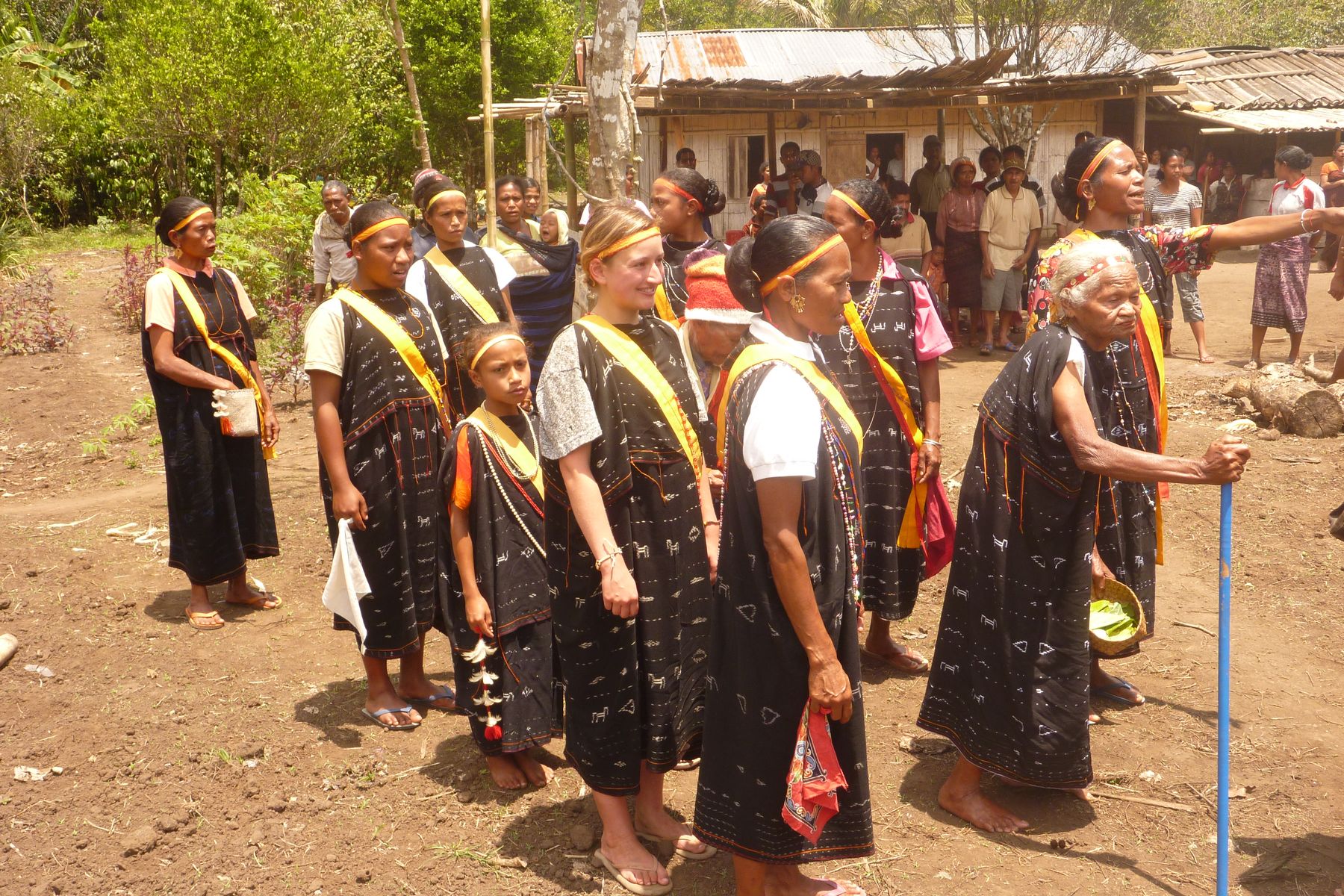
I snuck off the dancefloor somehow, then the drum circle got louder, as did the powerful yells to the ancestors, and the animal sacrificing began.
Asry led me to a small room in the middle of the big house that this party surrounded. The room had a small door and was elevated above all the other rooms in the house. Asry explained that this was the spiritual room, where the family prays to their ancestors. The door is small so that you give respect by bowing your head when you enter.
Next, I hear a scream and loud banging drums- a large pig was sacrificed outside. I looked out and saw its neck split open and blood dripping into a bucket.
Asry explained that this party was a celebration of the building of the new house we were sitting in. This house will be the “main house” of a small village, the place where family members meet, have celebrations and pray together. Animals are sacrificed on this day and their blood is smeared onto large sheets of metal which are then placed on top of this elevated spiritual room to create a special trapezoid-shaped roof. The blood of the sacrificed animals is an offering for their ancestors.
Asry left the spiritual room and I sat there with 10 very old people that gave me more rice and grilled meat.
‘I sure hope their ancestors don’t like human blood.’
I knew it was crazy to think that they might want to sacrifice me too, but I couldn’t fully get that thought out of my head, especially since I had only met Asry two days before this ceremony and everything seemed so wild! The banging drums, the black cloths, the yells, the dancing, the blood!
But at that point, I figured that if they did want to, it was already too late to do anything about it now, since I was god-knows-where and outnumbered by about 200 people.
I laughed about the fact that if anything like that did happen, nobody would ever find me!
Yeah, these were still the days before I had a smartphone.
The second animal I saw being sacrificed was a dog. The tribal leader gave it three smacks on the head and it fell dead and was hung from a rope tied to a large wooden pole. A few minutes later, they tied a second dog to this pole while the dead one still hung in the air. As you could imagine, the living dog was absolutely shitting itself.
I did not see whether the second dog was sacrificed or not. I saw it tied to the pole for several minutes, panicking and emitting so much fear that I could practically see it, then a man untied the chain and lead it away.
Asry’s family cooked and ate every part of every animal that was sacrificed, including the dog. During this celebration, 30kg of rice were cooked, everybody ate A LOT and each family unit took home a goody-bag of rice and meat in the same traditional basket they came in with.
Later, they put up the thatched-roof shacks and umbrella-like structures that I noticed in Bena. These structures are called ‘ngadhu’ and ‘bhaga,’ and they commemorate the male and female ancestors of each family unit.
No one attempted to sacrifice me during this party, so I ended up living in Asry’s village for over a week. I felt honored to be there and to have this experience.
Asry’s house was made out of bamboo. It didn’t have running water, a kitchen, much electricity or much furniture, but it was nice and cozy, especially in the mornings.
Each day I would wake up slowly as faint sunrays shined through the misty air. Sometimes it felt a bit damp and chilly in the morning, since her village was in the mountains. The smell of smoke, fire and coffee filled the air. I stretched out my arms, took a deep breath, then slowly made my way to the family room. There were always six or seven family members crowded around a fire inside the house in the morning. Somebody would always hand me a fresh cup of home-grown coffee, the best coffee I had ever had. Then I would sit quietly on a small stub of wood, sipping the coffee and getting lost in my thoughts and the crackling sound of the fire.
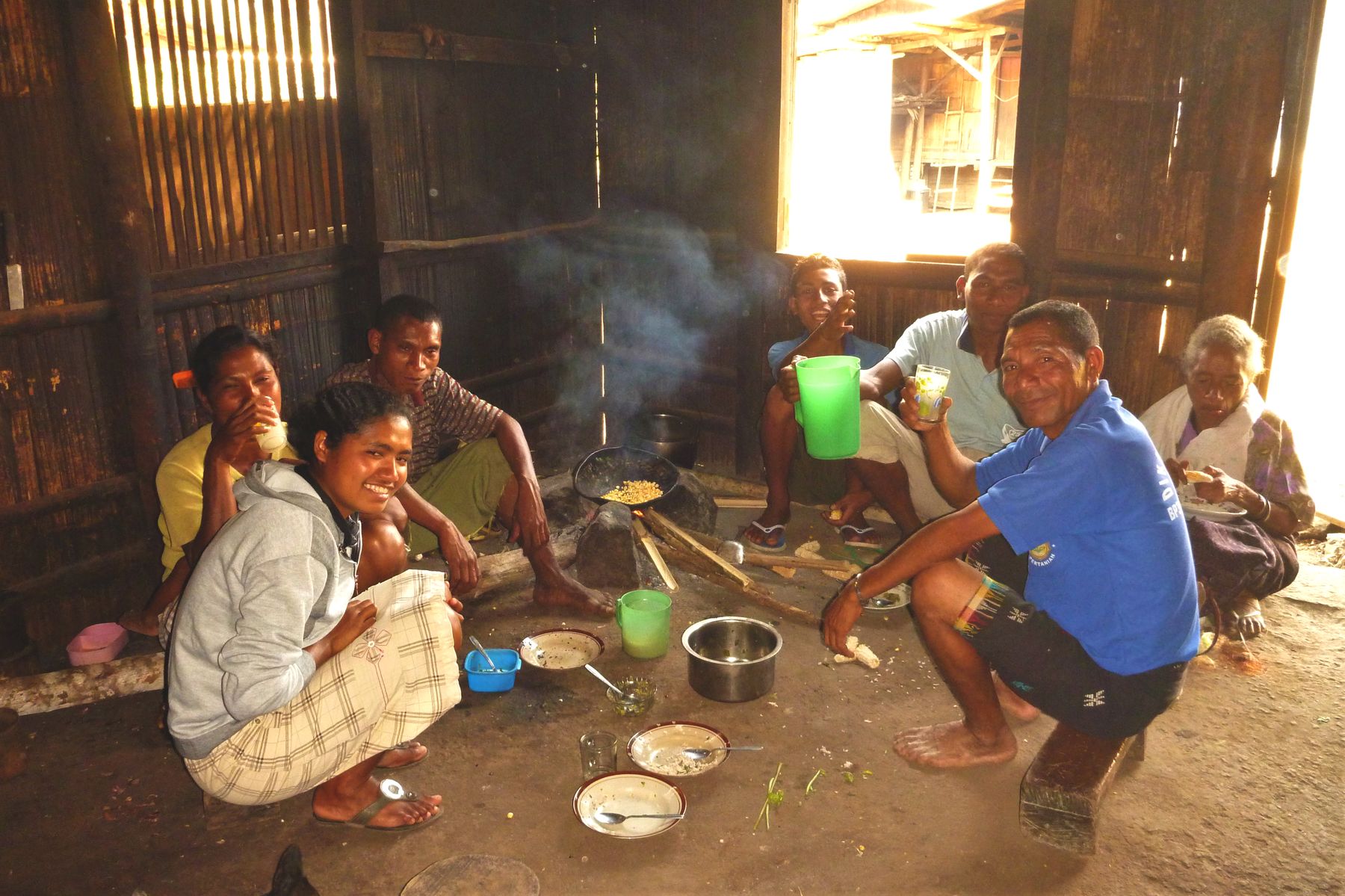
In the day, Asry and I walked around the village and met with more family members. They were all so nice and they fed me A LOT! They showed me their cows, their pigs, gardens, rice fields and coffee plantations. They showed me how they made their own knives, their own furniture, weaved clothes and crafted many other products.
Asry’s family also took me on a motorcycle trip to some hot springs. On the way, we stopped at a Virgin Mary shrine, where the family members prayed to a Mary covered in their traditional black cloth. This was always awkward. I assumed that the family would believe that I was evil if they knew that I didn’t believe in any religion, so I explained to Asry that I just had my own religion, but she translated this as, “Protestant.” I decided not to argue.
Almost everybody on the island of Flores, including all of the people involved in these tribal ceremonies, considered themselves to be Catholic. During the big celebration where Asry’s family sacrificed animals for their ancestors, they were also displaying pictures and cards of Jesus and the Virgin Mary.
Since I knew that the locals were Catholic (and not Muslim), I didn’t think too much about what to cover my body with in these hot springs. I brought a towel and a bikini, nothing else. And once I had nothing but my bikini on, I noticed that every woman in the springs was in pants and a T-shirt and that every man was staring at my body. It was awkward but a bit too late to turn back now, so I just went in while everybody stared at me as if I was naked. I was kind of used to getting stared at at that point anyway.
I decided to leave Asry’s village after her brother and cousin drove in on a cargo truck and invited us to go on a road trip with them. They were delivering heavy equipment between Bajawa, Maumere and Larantuka (the eastern end of Flores) and were happy to bring family and friends along.
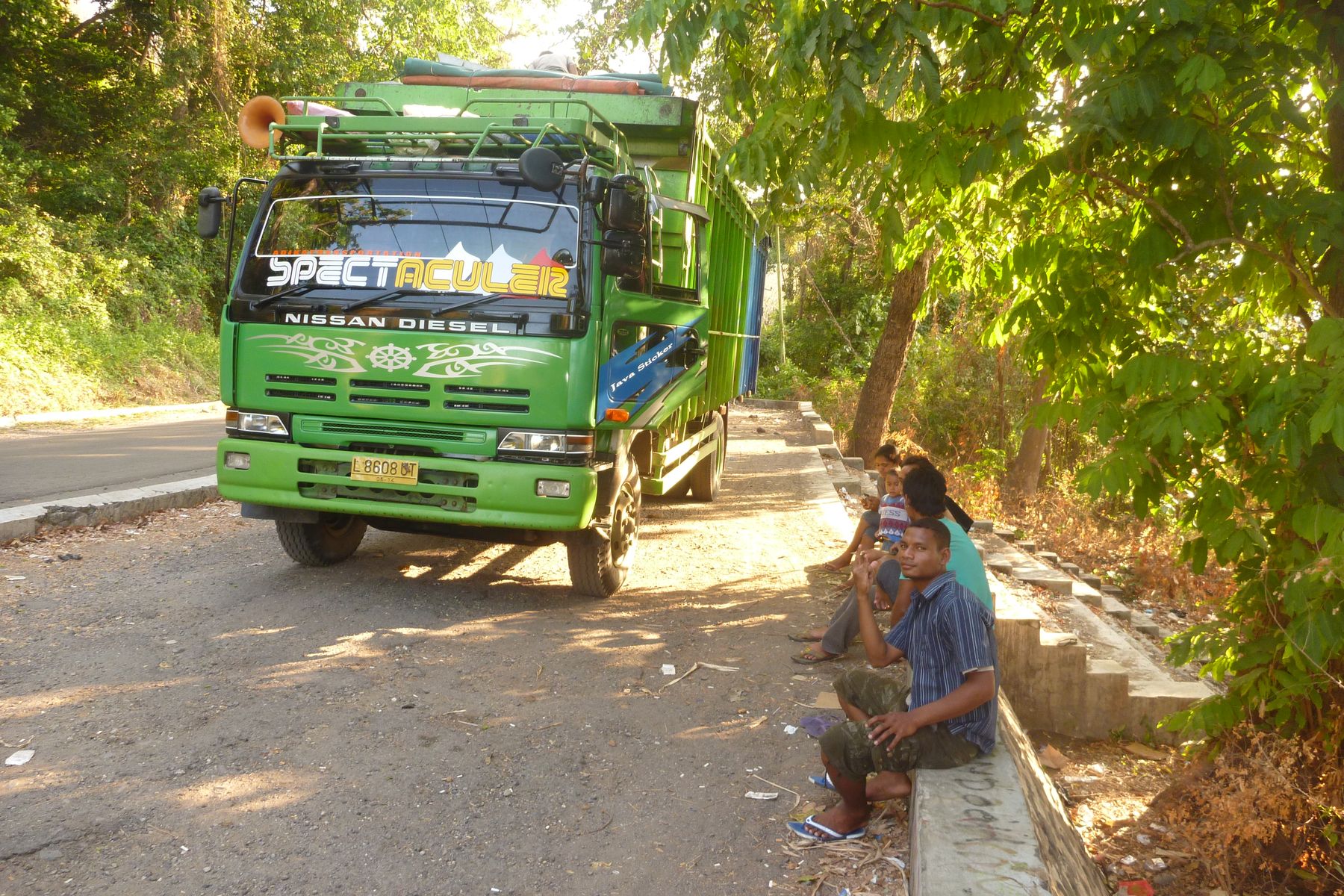
Seven of us squeezed into this giant truck- Asry, her brother, three of her cousins, me and for some reason, a five-year-old kid.
I don’t remember who’s kid he was, but I don’t think that he was the child of anybody in our truck. That didn’t seem to be so important to them though, since everyone in the family took care of all of the children. I would even get confused from time to time because Asry would sometimes refer to her uncles as her “father” and her aunts as her “mother,” even though her mother had died and her father was living with her. It was interesting to see a different perspective of the idea of a family and how to raise children.
According to the map, the drive between Bajawa and Larantuka is only about 400 kilometers, but since the road was not well maintained and weaved around like crazy, going up and down big mountains, the drive took several days.
It was a beautiful drive, nevertheless, and Asry and I had front row seats in this big truck. We drove through flowery mountains, passed by black volcanic beaches, rice terraces and lush jungles. We took breaks by the ocean and stopped to eat rice and curry in local eateries.
I remember walking into a busy lunch shack in a small village somewhere far east; we sat down, had a look at the menu, and all of the sudden the entire place turned silent. I lifted my head and every single person in the lunch shack was staring at me.
Everywhere I went, I was greeted with excitement and curiosity. Since I was now with Asry and her family, people didn’t seem to attack me for money like before, now they wanted to give me stuff instead!
We slept in the houses of Asry’s aunts and uncles in other villages on Flores. Their family members took us in and fed us until we could barely move.
October 7, 2011
Now I am in Moni, a small village below Kelimutu, the volcano with the tri-colored lakes. Tomorrow I am meant to see this volcano (leaving at 4:20AM to watch the sun rise above it!).
I am not sure exactly what will happen next, but I feel that it is time to leave Indonesia and move on to new lands…Plus, my friend is calling me to join him on his yacht in New Zealand on a two-month sailing trip!! So as long as they let me back into Aotearoa, I shall soon be writing of grand adventures in open seas.
I hope that you can now understand that although I am not in university, I am learning more about international and global studies than I ever have.
Right, so all of that Caveot font about Indonesia was originally written for my mother’s birthday in October of 2011. Not sure if that was a good birthday gift, now that I think about it, I probably scared the shit out of her more than anything else. My poor mother…
I did the short and easy hike up Kelimutu the next morning, watched the sunrise over the three different colored crater lakes (blue, green and black), then made my way all the way back to Bali. The trip back to Bali was much easier now that I knew a bit more Indonesian and I felt like I could communicate and relate to the local people better. I took buses back and made some stops along the way. I rented a motorbike in Mataram, Lombok, and drove around the south of the island by myself, then I took a ferry to Bali and flew out to my next adventure: a two-month long sailing trip around the North Island of New Zealand…
